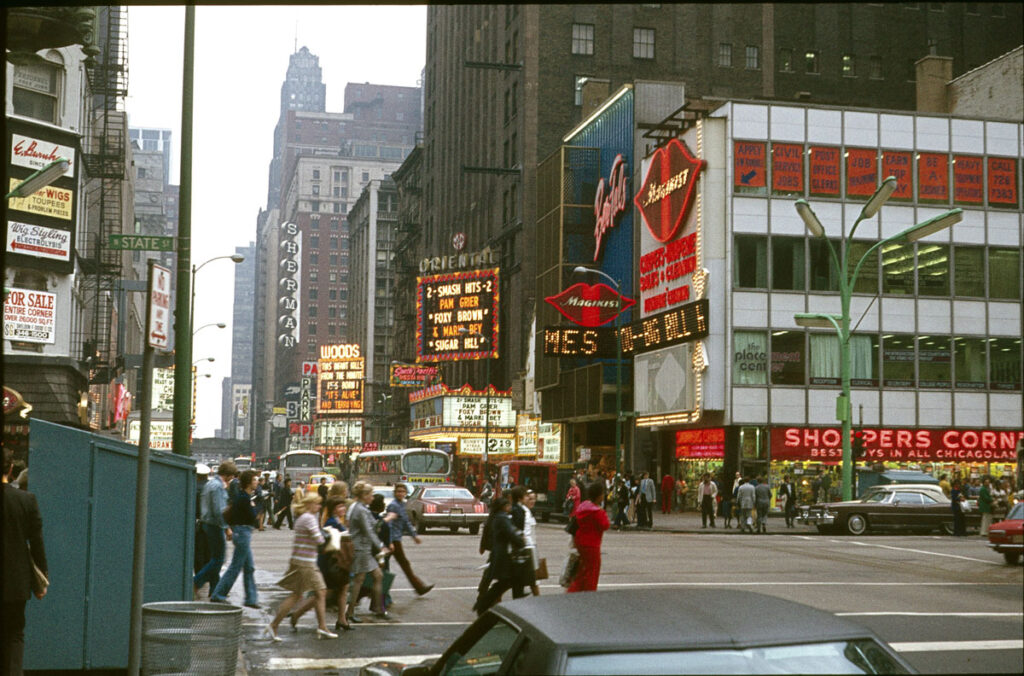Chicago Culture Highlights the Late 70s and Today

The 1970s in Chicago were filled with cultural vibrancy and complex challenges, setting the stage for the city’s evolution in the following decades. The variety of art and culture found in Chicago during the late 70s fills books. While some events just left fond memories, many other new beginnings from the second half of the 1970s took root. They now contribute to what makes this city tick today.
As S&B Finishing comes closer to celebrating a half-century in Chicago, let’s look back five decades at what made this city such a special place.
Music and big names
A longtime hub for live music, Chicago hosts the oldest free outdoor classical music series in the United States. For over 90 years, the Grant Park Music Festival has been a summertime tradition. Chicago’s musical identity also centers around blues and jazz as well as house music, born here in the late 70s.
The first-ever Chicago Fest took place in 1978, the same year that Kenny Spielman opened his new business, S&B Finishing. Chicagoans enjoyed dancing and rocking out to big-name bands including the Rolling Stones and opening act Etta James as well as Eddie Money, and Muddy Waters, at the 10-day event that took place at Navy Pier. A year later the first Jazz festival was held in Grant Park. Some of the featured talent at these festivals was homegrown while other artists were drawn to the city. Yet, both have left their mark and created memories for locals and visitors alike.
In the late 70s music enthusiasts went to venues like the Checkerboard Lounge in Hyde Park and the Jazz Showcase. Famous performers at Kingston Mines in Lincoln Park included Bob Dylan, Robert Plant, Stevie Ray Vaughan, and the Blues Brothers who performed here while promoting their movie. Precisely in 1978, Mick Jagger ended up on stage jamming with the great Lefty Dizz and his band.
Theater and Film
Chicago’s theater scene flourished with The Goodman Theatre and Steppenwolf Theatre gaining prominence. Precisely during the mid-70s, The Goodman Theatre established Stage 2, a space dedicated specifically to experimental theater. American Buffalo by David Mamet opened in October on Stage 2. The play was highly successful, and Mamet became the face of accession of the Chicago theater scene in the 70’s.
The Steppenwolf Theatre produced its first play in the Summer of 1975, The Effect of Gamma Rays on Man in the Moon Marigolds. By the end of 1976, they had established themselves in the vacant basement of the Immaculate Conception Catholic school in Highland Park with a newly formed ensemble that included founders like John Malkovich, Laurie Metcalf, and Alan Wilder. Now you will find the theater on North Halsted Street.
Meanwhile, the city became a backdrop for various films that reflected urban life and issues. The Blues Brothers, a homage to the hometown of John Belushi included footage of the bustling Maxwell Street flea market. Its soundtrack featured tracks by Ray Charles, Aretha Franklin, and James Brown, who appeared in cameo roles. A thrilling chase sequence took moviegoers on a crazy ride through Lower Wacker Drive up to Daley Plaza,
Cooley High was a seminal African-American coming-of-age movie that came out in 1975. It was set in the early ’60s and featured life at the Old Town High School, an actual school near the Cabrini-Green housing project. Over the years, it’s been considered a touchstone picture for an entire generation of children who grew up in Chicago.
Uniquely Chicago architecture tours and outdoor recreation
Chicago’s skyline is a landmark of iconic skyscrapers and diverse architectural styles. Widely considered the birthplace of the modern skyscraper, the city was home to pioneering architects from the “Chicago School” who developed innovative designs that allowed for these tall, structurally sound buildings. The 70s was a time in which Chicago’s architecture evolved notably, becoming more innovative and technologically advanced.
City tourist attractions
Among the most popular boat tours during the 70’s were the Fireboat Tours. The Fireboats offered tours on the retired Fred A. Busse Fireboat, known as the largest diesel-powered fireboat at the time it was built back in the late 1930s. These tours offered a historical experience, as well as a beautiful sunset view from the river or Lake Michigan. Other popular tours of this time included visits to buildings like The John Hancock Center, The Water Tower Place, and the former Sears Tower.
The Sears Tower, completed in 1973, had its fifth birthday the year S&B opened its doors. Skydeck at 1,353 feet above ground on the 103rd floor is the highest observation deck in the United States and its elevators are among the fastest in the world it continued to draw international visitors as the world’s tallest building for 25 years. Renamed the Willis Tower in 2009, this iconic landmark receives over 1.7 million visitors each year.
Architecture tours that demonstrate how the city’s architecture has evolved through history have multiplied in the past five decades. A few include: Chicago Architecture: A Walk Through Time, the Chicago Architectural Tour via the Chicago River, the Chicago’s Loop walking tour, and the Art Deco: Landmark Lobbies
The first Chicago Marathon
An outdoor fall classic that got its start in the late 70s was the Chicago Marathon. Back then, running wasn’t considered a mainstream sport, instead was often viewed as a weird, even counter-culture activity, according to WGN9. Nonetheless back on September 25, 1977, at the foot of the Picasso sculpture in Daley Plaza 4,200 runners gathered for Chicago’s first modern marathon.
In 2024, a whopping 52,150 runners finished the Chicago Marathon, making it the largest field in the race’s history. While registration is already closed for the upcoming marathon on October 22, 2025 people can still get personally involved by sponsoring runners and teams that are raising money for their favorite charity.
The quiet presence of S&B Finishing
S&B has grown amid this Chicago backdrop with quality work that stands up to the test of time. Powder coat finishing by the company can be found in transportation and military applications, in hospitals as antimicrobial finishing, architectural structures, businesses, and residential homes.
Kenny Spielman and the team at S&B Finishing are proud to be a part of Chicago and appreciate all the customers who have made it possible for the company to remain in business for the past 47 years. It has been an honor over the decades to add protection and durability to structures and machinery throughout the city.

